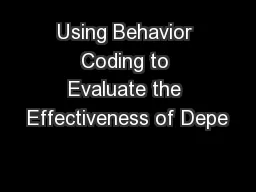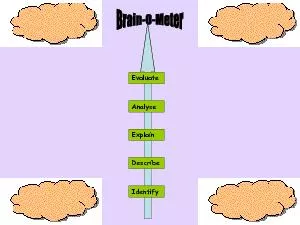PPT-Using Behavior Coding to Evaluate the Effectiveness of Depe
Author : debby-jeon | Published Date : 2016-05-11
Joanne Pascale QUEST Conference Ottawa Canada April 26 2007 Outline Dependent interviewing Research questions addressed with behavior coding Methods Findings Summary
Presentation Embed Code
Download Presentation
Download Presentation The PPT/PDF document "Using Behavior Coding to Evaluate the Ef..." is the property of its rightful owner. Permission is granted to download and print the materials on this website for personal, non-commercial use only, and to display it on your personal computer provided you do not modify the materials and that you retain all copyright notices contained in the materials. By downloading content from our website, you accept the terms of this agreement.
Using Behavior Coding to Evaluate the Effectiveness of Depe: Transcript
Download Rules Of Document
"Using Behavior Coding to Evaluate the Effectiveness of Depe"The content belongs to its owner. You may download and print it for personal use, without modification, and keep all copyright notices. By downloading, you agree to these terms.
Related Documents














